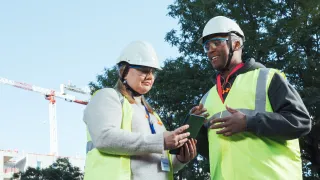Finnish Institute of Occupational Health media release 13 September 2023
The study How is Finland doing? by the Finnish Institute of Occupational Health reveals that Finns’ well-being at work has not returned to its level before the COVID-19 pandemic. People experienced less work ability and work engagement during summer 2023 compared with late 2019. Well-being at work seems to no longer be declining for people under the age of 36.
“None of the studied experiences of well-being at work have improved. At best, the decrease has levelled over the last couple of years. The results do not provide much cause for joy. Decreasing the incidence of occupational burnout and loneliness, which has increased for many, will both pose significant societal challenges,” says Jari Hakanen, Research Professor at the Finnish Institute of Occupational Health.
“Workplaces can do a great deal to promote employee well-being. This is done by developing working conditions in co-operation with the employees. This could entail increasing the opportunities for learning on the job and maintaining a sense of community. We should also do our best to avoid posing unreasonable expectations or demands on employees,” says Specialist Researcher Janne Kaltiainen.
Risk of occupational burnout concerns a growing number of people
The group at risk of occupational burnout is approximately five percentage points greater than in 2019. The situation has declined especially for women. In the summer of 2023, the groups in which most people experienced occupational burnout were women, people with less educational background and those under 36 years of age. Overall, approximately one in four employees belong in a group at risk of occupational burnout.
“Putting this in relation to the estimated size of the workforce two years ago, this means that roughly 625,000 employees are at an elevated risk of occupational burnout. Of this group, one in three experience so severe symptoms of occupational burnout that they are likely to hinder the person’s daily activities,” says Janne Kaltiainen.
The growth of occupational burnout symptoms is seen across our entire society. Compared to before the COVID-19 pandemic, there are fewer people with no occupational burnout symptoms at every educational level.
Simultaneously, there is a rise in cognitive disorders, meaning decreases in the capacity for thought, memory and attention.
“It would seem that the mechanism for the emergence of occupational burnout is becoming more varied. The starting point for the theory on occupational burnout is that chronic fatigue is a key underlying factor. According to our results, fatigue has not increased, but instead cognitive disorders and increasingly cynical attitudes towards work have become more prevalent both among men and women,” says Jari Hakanen.
Diverging developments in well-being at work in remote work
Thus far, it has seemed that hybrid work, meaning partial remote work, is the best way to promote well-being at work. Now, the differences have evened out: the situation of people working only remotely seems to be developing slightly more positively, while work engagement in hybrid work has decreased to the same level as in full-time remote work.
“In certain life situations, working at home saves time and resources, which is visible in our study as a slight decrease in occupational fatigue. On the other hand, long-term continuous remote work is prone to experiences of boredom and decreased meaningfulness,” says Jari Hakanen.
“The elevated level of boredom in remote work may be explained by a decrease in the experiences of the work being meaningful for other people. In some cases, remote work can also cause the employee to feel more detached from the meaningfulness of their own work,” adds Janne Kaltiainen.
Loneliness on the rise for men and in remote work
The prevalence of loneliness differs between population groups. Young employees are more likely to feel lonely compared with other age groups. Already one in three employees under 36 feel lonely, compared with one in four in older age groups.
“Notably, the loneliness experienced by young employees remained at the level it was during COVID-19. One could have hoped for loneliness to decrease as the restrictions were phased out,” says Janne Kaltiainen.
The experience of loneliness is on the rise for men and for people engaged in remote work. Already one in three people engaged in remote work experience loneliness, which is more than in 2021, the most difficult year of the COVID-19 pandemic.
“The lack of a sense of community at workplaces is a challenge we need to take seriously. Loneliness gnaws at our well-being and eats up our resources to seek company. Workplaces should maintain dialogue and carry out experiments on best practices for combining employee autonomy and the desire for community with approaches that benefit work and well-being,” says Jari Hakanen.
Research project: How is Finland doing?
-
The research project produces information on how well-being at work and different attitudes toward work have developed among Finnish employees over recent years.
-
All respondents are working Finns aged 18–65.
-
This time, the focus is on changes in Finns’ well-being at work between late 2019, summer 2021 and summer 2023.
-
The How is Finland doing? research is funded by the Finnish Institute of Occupational Health and Finland's Sustainable Growth Programme.
-
More information: How is Finland doing? | Finnish Institute of Occupational Health (ttl.fi)
For more information, please contact
-
Research Professor Jari Hakanen, +358 (0)40 562 5433, jari.hakanen [at] ttl.fi (jari[dot]hakanen[at]ttl[dot]fi)
-
Specialist Researcher Janne Kaltiainen, +358 (0)50 476 5980, janne.kaltiainen [at] ttl.fi (janne[dot]kaltiainen[at]ttl[dot]fi)






